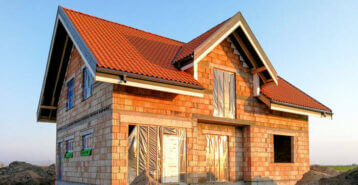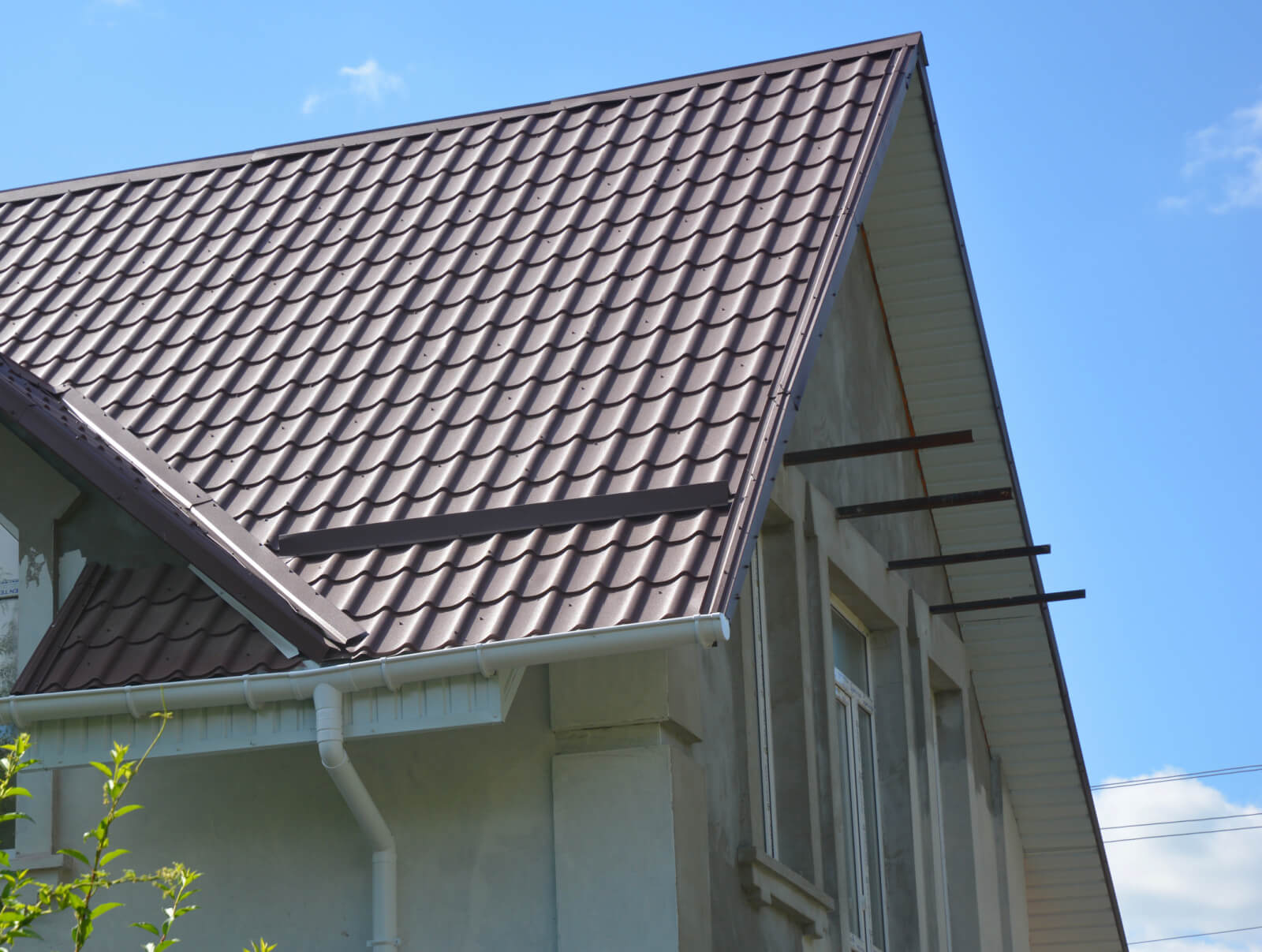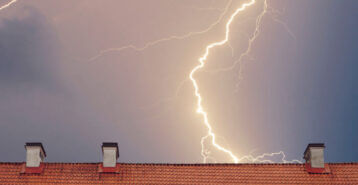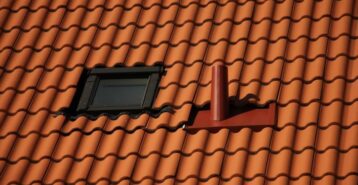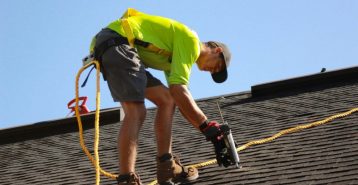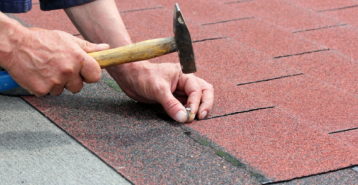When a roof problem shows up that requires repair, homeowners often ask two questions: “How urgent is this?” and “How much will it cost?” This page gives you clear, scannable cost ranges you can trust—organized by state, damage type, roof material, roof size, and labor. We also explain the hidden factors that push costs up or down and practical money-saving tips.
How Much Does Roof Repair Cost in 2025?
The national average cost for a roof repair as of 2025 is $1,150. Most repairs fall between $350 and $1,900.
At the low end ($150 to $450) you’re typically paying for small fixes like a few missing shingles or a flashing re-seal. The high end ($2,000 to $6,500+) covers larger leak areas, storm and hail impact, damaged decking, or skylight-related work. Costs rise with pricier materials (tile/metal/slate vs. asphalt), steep or hard-to-access roofs, and emergency/after-hours calls. Repairs are usually more affordable when damage is localized and access is easy.
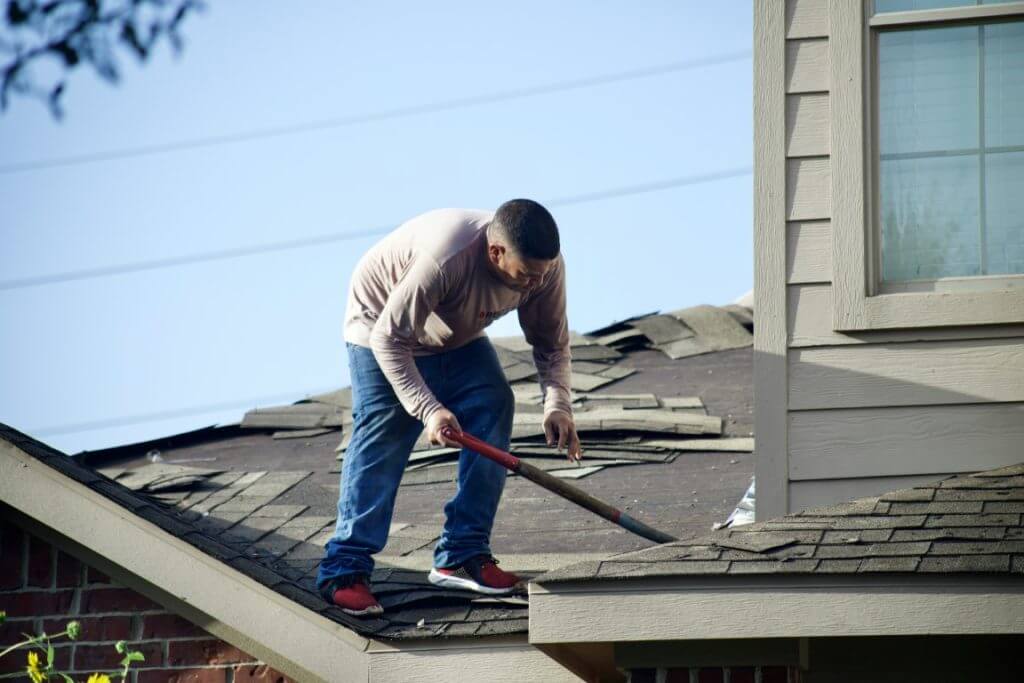
Your total cost depends on:
-
Scope: small patch vs. several “squares” (100 sq ft each) vs. structural.
-
Material: asphalt is cheapest to repair; slate/tile are highest.
-
Access & pitch: steep, two-story, or hard-to-reach areas cost more.
-
Timing: emergency calls, storm surges, and after-hours drive premiums.
Common scenarios:
-
Replace a few missing asphalt shingles: $150 to $350
-
Re-seal flashing (chimney/vent): $200 to $600
-
Leak at a valley (remove/replace a few squares): $600 to $1,400
-
Hail damage across multiple slopes (class-4 upgrade): $1,800 to $5,000+
-
Decking swap (rot/impact) per affected area: $700 to $2,500+
(Note: Ranges are national estimates. Costs by state below will provide tighter bands by where you live).
Roof Repair Cost by State
Here’s a quick state-by-state look at typical roof repair costs for 2025. These cost ranges reflect minor to moderate repairs (labor + materials). Note that major structural or storm-driven work can exceed these estimated costs. Expect higher prices in coastal and Northeast states and lower prices in much of the Midwest and South. Your final price depends on material, access/pitch, scope, and local labor.
| State | Minor Repair (typical) | Major Repair (typical) |
|---|---|---|
| Alabama | $300–$750 | $950–$1,400 |
| Alaska | $450–$1,050 | $1,400–$2,000 |
| Arizona | $300–$800 | $1,000–$1,500 |
| Arkansas | $300–$750 | $950–$1,400 |
| California | $400–$1,000 | $1,300–$1,900 |
| Colorado | $350–$900 | $1,150–$1,700 |
| Connecticut | $400–$950 | $1,250–$1,800 |
| Delaware | $350–$850 | $1,100–$1,600 |
| Florida | $350–$900 | $1,150–$1,700 |
| Georgia | $300–$800 | $1,000–$1,500 |
| Hawaii | $450–$1,050 | $1,400–$2,000 |
| Idaho | $300–$750 | $950–$1,400 |
| Illinois | $350–$850 | $1,100–$1,600 |
| Indiana | $300–$750 | $950–$1,400 |
| Iowa | $300–$750 | $950–$1,400 |
| Kansas | $300–$750 | $950–$1,400 |
| Kentucky | $300–$750 | $950–$1,400 |
| Louisiana | $300–$800 | $1,000–$1,500 |
| Maine | $350–$850 | $1,100–$1,600 |
| Maryland | $400–$950 | $1,250–$1,800 |
| Massachusetts | $400–$1,000 | $1,300–$1,900 |
| Michigan | $350–$850 | $1,100–$1,600 |
| Minnesota | $350–$900 | $1,150–$1,700 |
| Mississippi | $300–$750 | $950–$1,400 |
| Missouri | $300–$800 | $1,000–$1,500 |
| Montana | $300–$800 | $1,000–$1,500 |
| Nebraska | $300–$800 | $1,000–$1,500 |
| Nevada | $350–$850 | $1,100–$1,600 |
| New Hampshire | $350–$900 | $1,150–$1,700 |
| New Jersey | $400–$1,000 | $1,300–$1,900 |
| New Mexico | $300–$750 | $950–$1,400 |
| New York | $400–$950 | $1,250–$1,800 |
| North Carolina | $300–$800 | $1,050–$1,500 |
| North Dakota | $300–$800 | $1,000–$1,500 |
| Ohio | $300–$750 | $950–$1,400 |
| Oklahoma | $300–$800 | $1,000–$1,500 |
| Oregon | $350–$900 | $1,150–$1,700 |
| Pennsylvania | $350–$850 | $1,100–$1,600 |
| Rhode Island | $350–$900 | $1,150–$1,700 |
| South Carolina | $300–$800 | $1,050–$1,500 |
| South Dakota | $300–$800 | $1,000–$1,500 |
| Tennessee | $300–$800 | $1,050–$1,500 |
| Texas | $300–$800 | $1,100–$1,600 |
| Utah | $300–$800 | $1,050–$1,500 |
| Vermont | $350–$850 | $1,100–$1,600 |
| Virginia | $350–$850 | $1,100–$1,600 |
| Washington | $350–$900 | $1,150–$1,700 |
| West Virginia | $300–$750 | $950–$1,400 |
| Wisconsin | $350–$850 | $1,100–$1,600 |
| Wyoming | $300–$800 | $1,000–$1,500 |
Roof Repair Cost by Type of Damage
The type of damage on your roof is the biggest driver of repair cost. Some issues are quick, localized fixes, while others require tear-off, decking replacement, or specialty materials and labor. Below, we break down typical 2025 roof repair cost ranges, how each problem usually happens, where it’s most common, and when insurance may help.
| Damage Type | Minor Repair | Major Repair |
|---|---|---|
| Hail | $600 to $1,400 | $2,500 to $6,500+ |
| Leaks | $200 to $800 | $1,200 to $2,500 |
| Wind / Hurricane | $250 to $700 | $900 to $1,500 |
| Tree / Impact | $900 to $2,500 | $2,500 to $6,500+ |
| Ice Dams / Freeze–Thaw | $400 to $900 | $1,200 to $2,000 |
| Vent Boots / Pipe Collars | $150 to $300 | $400 to $700 |
| Fascia / Soffit / Flashing Metal | $250 to $500 | $600 to $900 |
Hail Damage
Hail is a common cause of roof repair jobs. These weather events can bruise shingles, knock off protective granules, and fracture the shingle mat or dent metal panels— problems that often spread across multiple slopes. Typical hail damage roof repairs range from $600 to $6,500+, from limited shingle swaps and sealant to multi-slope work with underlayment checks and optional Class-4 impact-resistant upgrades.
This damage is most common in “Hail Alley” (TX/OK/KS/CO/NE) and the Upper Midwest, peaking spring through summer. Insurance is often applicable when you can tie the loss to a dated storm event. Policy details (ACV vs. RCV) and your deductible will shape out-of-pocket costs.
Leaks
Roof leaks usually trace back to failed flashing, aged sealants, clogged valleys, or skylight curb and step-flashing issues. A roof repair involving a leak typically costs between $200 and $2,200+ depending on the source and scope.
Simple reseals are usually the most inexpensive roof leak repairs, whereas skylight re-flash, localized replacement sections, and decking repairs are usually more expensive.
Leaks can occur anywhere in the U.S., but are more frequent in the rainy Pacific Northwest, freeze–thaw Northeast and Upper Midwest, and high-UV Sunbelt where sealants degrade faster. Insurance can sometimes help cover costs if the leak stems from sudden storm damage; wear and age is typically not covered.
Wind Damage and Missing Shingles
Strong wind gusts can lift roofing tabs, crease shingles, and strip ridge/hip caps, exposing nail lines and creating spots where leaks can start. Repairs generally run $250 to $1,500, from small tab and cap swaps to several squares along ridges and hips.
Roof repairs caused by wind damage are most common along the Gulf and Atlantic coasts in the late-summer to fall hurricane season and across the Great Plains in spring. Insurance can be utilized in many instances for windstorms and hurricanes, but be aware that wind and hurricane deductibles and code-upgrade coverage can apply.
Tree or Impact Damage
Falling limbs—or whole trees—can puncture shingles and underlayment, break decking, and compromise framing. Note that tarping may be needed before permanent repairs. When it comes time for repair, costs typically range $900 to $6,500+, depending on impact size, debris removal, crane and access needs, and structural remediation.
Tree damage to roofs is most common in the wooded Northeast and Midwest, tornado corridors (AL/MS/TN/OK), and during Pacific storms. Insurance frequently covers tree damage to roofing as sudden impact loss, though tree-removal and additional items may have policy sub-limits.
Ice Dams and Freeze-Thaw
During the winter, heat escaping through attics can melt rooftop snow, which can re-freeze at cold eaves and force water under shingles. If you need to repair a roof due to ice dams, plan for $400 to $2,000+ for steam removal, leak repair, and often ventilation and insulation improvements to prevent the issue in the future.
These roof repairs are most common in the Upper Midwest, New England, and high-elevation Rockies, especially during winter to early spring. Insurance coverage is possible when water intrusion is sudden and documented, but long-term maintenance issues can reduce coverage.
Vent Boots and Pipe Collars
Aging rubber boots on roofs can crack and leak around plumbing vents and other penetrations over time. Luckily, it’s a quick fix if caught early. Most jobs are affordable, ranging from $150 to $700, from a single boot replacement to multiple penetrations with reseal.
This roof damage issue can occurs nationwide, with faster degradation in high-UV regions (AZ/NV/TX). Insurance typically does not cover this type of roof repair, unless a storm was the cause of the damage.
Fascia, Soffit, and Metal Flashing
Your roof’s perimeter metals and trim is built to protect the roof edges. Corrosion, loosening, or missing sections can lead to water intrusion and pests. Repairs typically cost $250 to $900, depending on your roof’s linear footage, material, mold remediation needs (if required), and access.
This problem is most common in coastal salt-air climates (FL/Gulf/Pacific) and the rainy Pacific Northwest. Insurance does not usually cover repairs due to wear and rot, but if a specific storm led to lifted flashing, you may qualify.
Roof Repair Cost by Type of Roof
The type of roof on your home is a core factor determining repair pricing. Different roof types need different tools, skills, and replacement parts—some are straightforward and inexpensive to fix, while others require specialty labor or delicate handling. Below, we break down average 2025 repair ranges and the common issues you’ll see with each material.
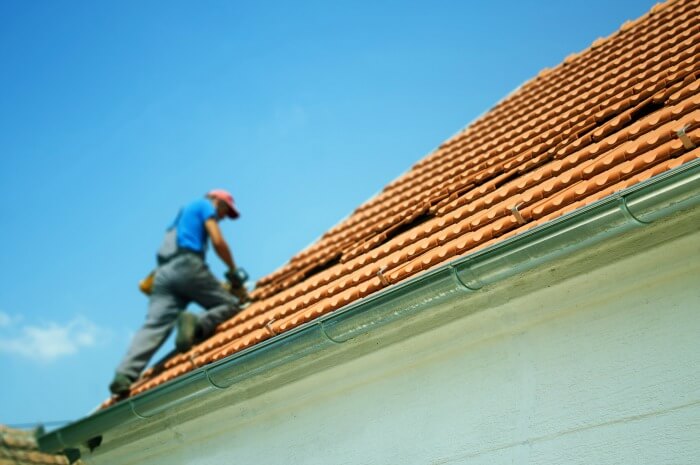
Asphalt Shingle (3-tab/Architectural)
As the most common roofing material, asphalt is usually the quickest and least expensive to repair. Typical jobs—replacing a handful of tabs, resealing flashing, or swapping a few damaged squares—typically runs $150 to $1,400.
Asphalt repairs stay affordable because materials are widely available and most crews are equipped for them. Costs can rise when leaks involve valleys or chimneys, when multiple squares are affected, or when steep/second-story access slows down labor.
Metal
Metal roofs are durable but require specialized tools and know-how for panel matching, fastener systems, and seam work. Expect $400 to $2,200 for typical repairs, from replacing damaged panels to addressing loose or backed-out fasteners and sealant failures at seams.
Pricing can climb for color and profile matching, custom fabrication, or difficult access around penetrations and hips. Coastal homes may also see corrosion-related work that adds time and material.
Tile (Concrete/Clay)
Tile roofing is long-lasting but fragile to walk on, and repairs often involve careful lift-and-reset plus underlayment work. Typical repairs range $600 to $2,500+.
Costs can increase when trying to match discontinued profiles, replacing cracked tiles across multiple areas, or addressing compromised underlayment and battens. Tile is prevalent in warmer, sun-exposed regions, where UV and heat cycles can accelerate wear on underlying components.
Slate
Slate roofs require premium repair pricing due to specialty labor and the care required to source and match individual slates. Most repairs fall $700 to $3,000+.
Expect higher costs for steep slopes, brittle aged slate, copper flashing interfaces, and any work that involves harnessing or staging. Slate remains common on historic homes in the Northeast and Mid-Atlantic, where preservation-grade workmanship is often necessary.
Wood Shake/Shingle
Wood shake and shingle repairs typically run $350 to $1,800, depending on the extent of replacement and local availability of species and grades. Moisture exposure, UV, and wind uplift cause the majority of wood roof repairs. In fire-risk zones, code requirements or treatments can add to cost. Matching weathered shakes and addressing ventilation can extend project time.
Roof Repair Cost by Roof Size
Roof repairs are usually priced by the area actually touched—not the whole roof—using “per square” (100 sq. ft.) as the common unit. Still, bigger homes often mean longer setup and tear-down time, more penetrations and valleys that can be implicated, and harder access, all of which can mean higher repair costs.
Below are rule-of-thumb unit costs to expect based on each roofing material:
-
Asphalt shingles: $250 to $600 per square repaired
-
Metal panels: $500 to $1,200 per square repaired
-
Tile (concrete/clay): $600–$1,400 per square repaired
-
Flat membrane patches: $350–$900 per square repaired
Generally speaking, you can expect the following cost ranges based on your home size:
-
Under 1,000 sq. ft. homes: $200 to $1,000.
Small, localized fixes—missing tabs, vent boot swap, minor flashing reseal. Easy roof access usually keeps labor costs down. -
1,000 to 2,000 sq. ft.: $350 to $1,600.
This is a common range for a few repaired squares around valleys/chimneys. Expect higher costs if decking is soft or roof pitch is steep. -
2,000 to 3,000 sq. ft.: $500 to $2,200.
Larger roof sizes often involve multiple slopes and penetrations, which requires more setup time and material handling. -
3,000+ sq. ft.: $700 to $3,000+
Complex roofs with longer ridge and hip lines involve harder access; multi-area fixes and staging can raise labor costs.
Note: Size is just one variable in determining your final roof repair cost. Material type, pitch/height, access difficulty, weather timing, and underlayment/decking condition often drive the final number more than raw square footage alone.
Roof Repair Labor Costs
Labor is a major contributor in most roof repair bills. It typically depends on crew size, material, timing, and local cost considerations. Expect base rates for standard asphalt work, with premiums for specialty materials and emergency calls.
-
Standard rates: $50 to $120 per hour per roofer.
-
Small crew day rate: $300 to $800 per day (2–3 roofers on a standard repair).
-
Emergency/after-hours premium: Expect a 25% to 100% increase on top of the typical local labor rates.
-
Specialty material uplift: Expect a 20% to 60% increase for slate, tile, or metal vs. asphalt roofing.
-
Regionality: High-cost metros (CA, MA, NY, WA) often run 10% to 25% above national averages, whereas lower-cost areas (TX, OH, GA) trend lower.
-
Access & setup time: Steep 2-story roofs, long ladder runs, and roofs that are more difficult to access can add hours even for small fixes.
Major Factors Impacting Roof Repair Costs
Every roof is different. What you can expect to pay for roof repairs will vary based on a few key factors:
Damage Scope and Location
Repairs at valleys, chimneys, skylights, and along ridges and hips are more complex than edge patches. These areas require additional tear-back, careful flashing, and leak testing, which increases labor time and total cost.
Roof Material
Asphalt shingles are usually quickest and least expensive to fix. Metal, tile, and slate require specialty tools and profile and color matching, and they’re slower to work on, so labor and materials typically cost more.
Pitch, Height and Access
Steeper roofs, two-story homes, or tight lot lines add staging and safety time. The harder it is to reach the repair area, the fewer shingles a crew can replace per hour, which raises the bill.
Underlying Issues (Underlayment/Decking)
If a leak has soaked underlayment, rotted decking, or introduced mold, a simple patch can turn into partial tear-off and rebuild. Replacing sheathing, adding ice-and-water shield, or drying/remediation adds materials and hours.
Weather and Seasonality
Storm surges, heat waves, and cold snaps create spikes in demand. During these periods, wait times can be longer and temporary premiums may apply for overtime, tarping, and rush materials.
Permits and Inspections
Some areas require permits for anything beyond like-for-like repairs and may mandate mid-job or final inspections. Fees and scheduling add time and cost, especially on larger or structural fixes.
Emergency Timing
After-hours, weekend, or holiday repair calls usually carry premium rates. Temporary tarping can stabilize damage so permanent repairs can be scheduled at standard labor prices.
Add-Ons Discovered Mid-Repair
Once shingles are lifted, crews may uncover related issues, such as failed flashing, clogged gutters, bad ventilation, or skylight problems. These scope increases add line items for parts and labor.
Age of Roof and Materials Condition
Older roofs can have brittle shingles, worn flashings, and outdated details that complicate repairs. Matching discontinued materials or upgrading to current best practices can increase cost.
Geographic Location and Labor Rates
Local labor costs, material availability, and codes vary by region. High-cost metros and coastal markets often run higher than national medians, while many Midwest/Southern areas trend lower.
Additional Costs to Consider
Beyond the main labor and material costs involved with your roof repair, it is smart to budget for these common line items. Some are optional upgrades, others are required based on local codes and specific damage conditions.
-
Permits: $50 to $400+ (depending on city and repair scope)
-
Decking replacement (per sheet): materials can cost $40 to $75 plus labor
-
Underlayment / ice-and-water shield upgrades: $100 to $500+ (depending on your area)
-
Ventilation upgrades (ridge/soffit): $150 to $600
-
Disposal & delivery fees: $50 to $250 (weight, distance, dump fees)
Roof Repair vs. Replacement Cost
Roof repairs will typically cost no more than $6,500, depending on the scope of damage. Full roof replacements typically cost much more—about $17,800 to $60,000+, depending on type and size of the roof.
A practical rule of thumb is to consider full replacement if:
- The repair estimate is more than 25% to 35% of the total cost for a roof replacement.
- Damage is widespread (for example, involving multiple slopes or recurring leaks).
- The roof is 70% to 80% through its life.
For asphalt roofs, look to replace rather than repair if it is more than 25 years old. For metal and tile, consider replacing at 40 years. Replacement can also unlock warranty, energy, or insurance advantages (e.g., Class-4 impact-resistant shingles in hail regions).
For a quick ROI check, compare the extra cost of replacement (replacement − repair) to the annual benefits (avoided future repairs, possible insurance discounts from Class-4 shingles, energy savings, resale/warranty value, etc.).
Use this rule:
Tips for Saving on Roof Repair
A few smart moves can reduce your total roof repair costs and help prevent repeat problems.
-
Fix small issues early. A $300 leak can become a $2,000 deck repair if delayed.
-
Bundle related work. For example, repairing flashing and shingle replacement in one visit cuts the cost of multiple jobs.
-
Ask about off-peak scheduling. Non-emergency jobs outside storm surges often price better.
- Ask about promotions. Many contractors offer limited time promotions and discounts, which can help lower your out-the-door cost.
-
Upgrade strategically. Class-4 shingles or better underlayment can lower future storm risk, preventing potential repairs.
-
Document everything. Photos, dates, and invoices help with insurance on storm-related losses.
-
Get multiple itemized estimates. Apples-to-apples line items expose differences in labor, materials, and disposal.
Compare top-rated roofing pros in your area.
Read real homeowner reviews, explore qualifications, and view promotions. Modernize makes it easy to browse professionals and find one that will be perfect for your project.






